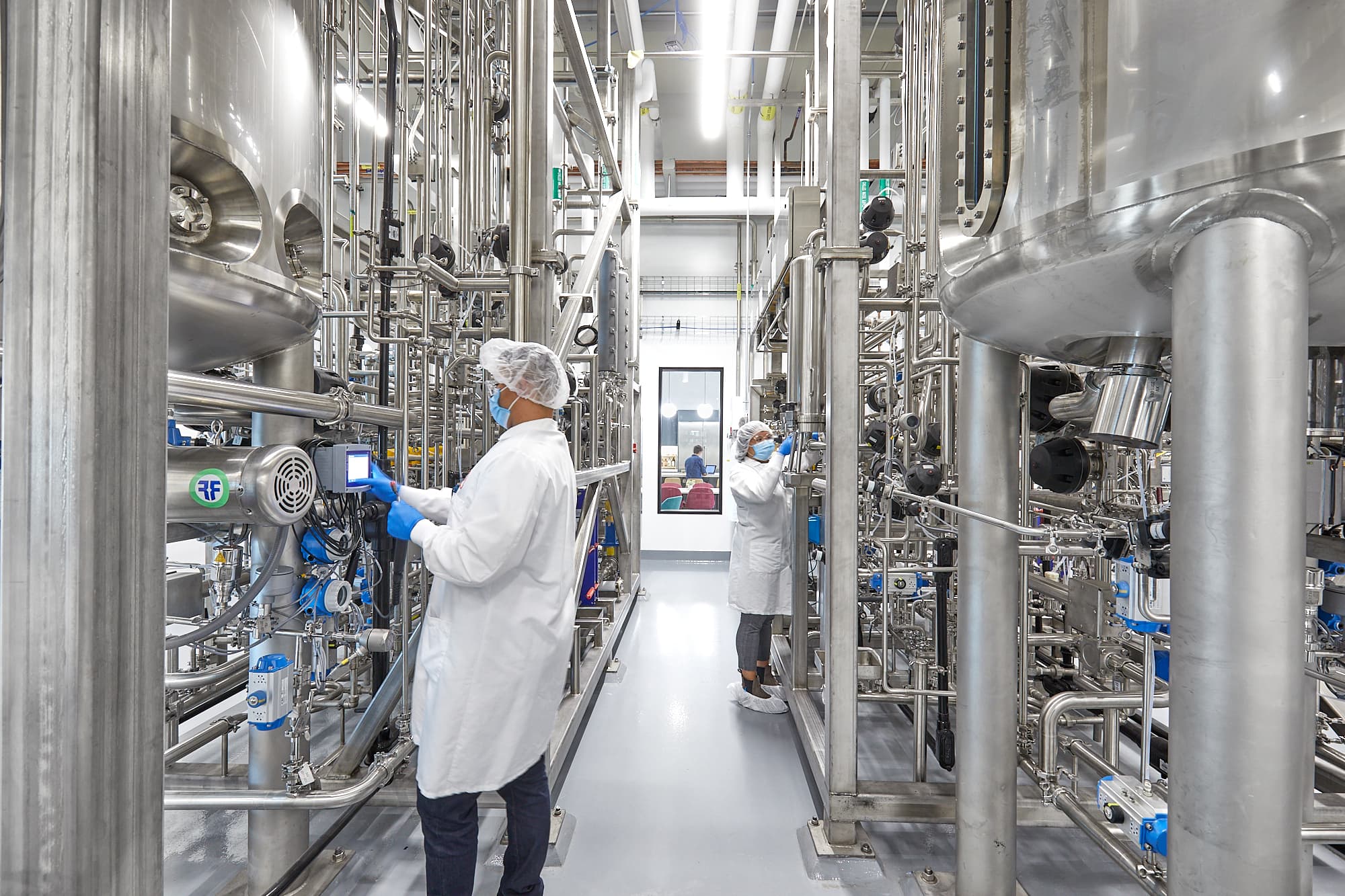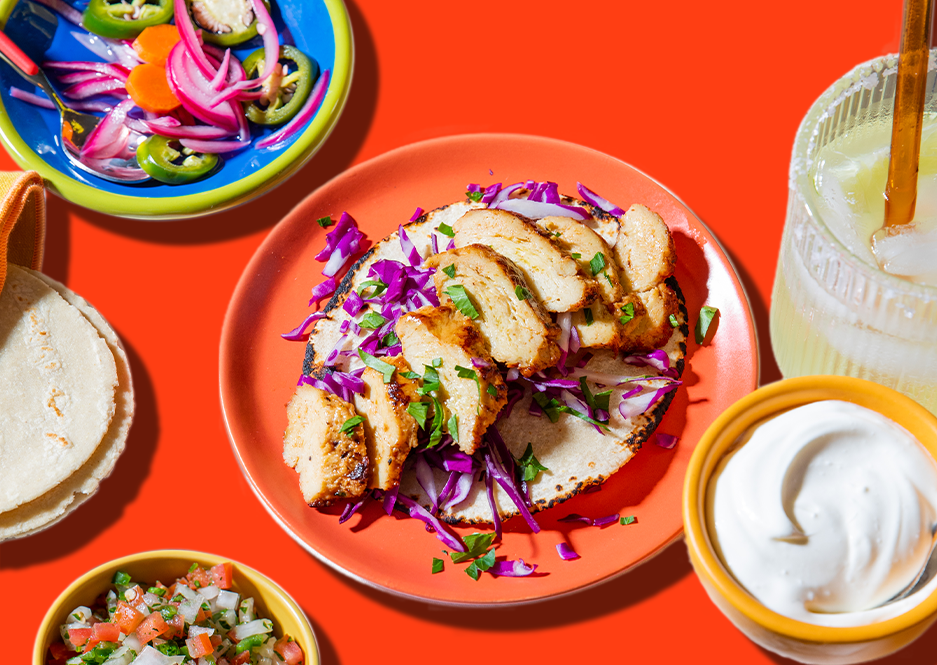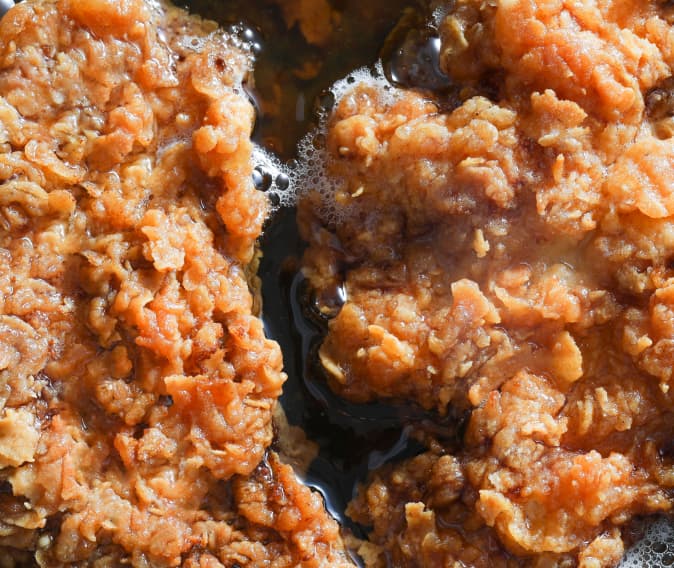A Destination Guide for the Road to Rubicon: from First Sale to Commercial Scale
September 19, 2023

Written by
UPSIDE Foods
Focusing on big problems accelerates innovation. Following on the heels of landmark regulatory green lights by the FDA and the USDA, UPSIDE recently announced its first cultivated meat sale in the United States and last week announced our first commercial-scale plant, called Rubicon, in the Chicagoland area. We’re one step closer to our vision of bringing delicious, humane, and sustainable meat to the world.
Even so, we have a long road ahead, and we’re creating a series called “The Road to Rubicon” that will take you behind the scenes on the path of creating a new industry.
This first series addresses some of the complex science, cultivation processes, and operations that are important steps in our innovation journey. Our goal is to share the state of the world as we know it, knowing that this will evolve as we make scientific and technical progress.
Our Focus: Tissue and Suspension
UPSIDE’s goal has always been to produce the full range of meat products that consumers love, whether it’s a whole-cut piece of chicken or a burger. We use two different types of production processes: tissue and suspension.
Tissue production grows cells in a cultivator to directly produce whole-textured products, such as filets and premium cuts. This process is complex because the cells need to connect to each other to form an integral sheet of tissue that provides structure and texture. For more on why we started with tissue (we are one of the few companies in the world pursuing this path), read our CEO’s recent blog on “Doing the Hard Things First.”
Suspension production grows cells in a cultivator that are then mixed with ingredients, such as seasonings, vegetables, breading, and plant-based proteins, to produce cultivated burgers, hot dogs, nuggets, dumplings, and more.
Our Learnings: The Evolution of EPIC and Tissue


UPSIDE’s EPIC (Engineering, Production and Innovation Center) facility opened in November 2021 and was designed as an engineering and innovation facility for both tissue and suspension, as well as a production site. This dual purpose enables us to continually learn and evolve our technology over time. We may move forward and commercialize certain pathways and leapfrog or sunset others.
Case in point, our tissue cultivation process has evolved, which is a natural and expected part of the scientific innovation and discovery process. Years ago, we developed a proprietary approach for producing delicious, safe, whole-textured products at a small scale. We created myoblast and fibroblast cell lines that worked well in this process and ultimately selected a single primary fibroblast cell line based on its superior sensory, taste and compositional profile. These are cultivated in small 2-liter plastic roller bottles that are used as bioreactors (which we call BR7s) to create an incredible chicken product–the North Star not only for UPSIDE but also for the entire industry. We knew that to have a much larger impact, we needed to produce at a much larger scale. So, we designed a series of medium-scale tissue cultivators that draw from the lessons of our small-scale process, aiming to replicate its remarkable taste, texture, and overall experience on a larger scale.
When we built EPIC, we designed it to include what was, at the time, our latest generation of tissue cultivators. While these cultivators supported foundational IP and could run as intended (without contamination issues), the complexity of operating these cultivators at scale did not hit our productivity and cost targets. Our team viewed this as a challenge and has developed a next-generation design to address these challenges. It is still in the development phase but is an active area of investment and focus.
Our First Tissue Product: A North Star and a Beta


When we became the first company in the world cleared by the U.S. FDA to market a cultivated meat product, and subsequently received the required approvals from the USDA (under the joint regulatory framework implemented by FDA and USDA), we chose to start introducing consumers to our cultivated chicken tissue product, even if our current method only allows for very small volumes. This product is now being served at Bar Crenn once a month to 16 diners. We’re proud that it has already set a high and inspiring bar for cultivated meat.
Our debut cultivated chicken is a whole-textured chicken that is 99%+ cultivated chicken cells, and the Washington Post described it as “the kind of chicken that once was common in America, before the poultry industry sacrificed flavor for rapid growth.” The same article notes, “It may be the most chicken-y chicken I’ve tasted in a long time.” Similarly, Eater noted that “the meat itself was less sickly white than supermarket birds, and the taste evoked the kind of nostalgic, delicate meatiness proper chicken should provide.”
New innovation is hard and often iterative. As we continue working towards a more scalable process and product, we’re focused on:
Nutrition: Our goal is to match the nutrient composition of conventionally produced meat (and, long term, to exceed it). We already have lower levels of fat, but our sodium, cholesterol, and the levels of some heavy metals like lead are higher (details here in our FDA dossier). These levels don’t pose a safety risk (see FDA memo here), and heavy metals are still within the range of commonly consumed foods, such as spinach, grape juice, and dried fruit. But long term, we know it’s important for us to reduce these levels. We’ve already decreased heavy metals in our small-scale tissue product to the following levels: lead of 15.7 ppb, arsenic of ≤10 ppb, and cadmium below the level of detection. (Note – these are the mean values of the product that has been commercially served; our serving size is 25g). Our next generation of suspension-based products have lead and cholesterol levels that are even lower.
Serum-free media: We’ve eliminated the use of fetal bovine serum from our small-scale tissue production process (it’s used in small quantities in our early cell-banking process) and still use gelatin and bovine and chicken serum. Our goal is to move towards serum-free and, ultimately, animal component-free media in all of our commercial processes. We’ve already made strides towards this goal. In 2021, our teams shared our historic achievement of suspension cell feeds that are animal component-free, and we’ve subsequently removed serum from our R&D processes. We’re working towards a goal of eliminating the use of any animal components, other than the animal cells, in our tissue and suspension processes at large scale.
More sustainable inputs: Our small-scale process involves single-use plastic bottles (that cannot be reused for food safety and quality reasons). This process will be replaced with cultivators made of stainless steel (like the ones currently in use in our suspension processes) or other materials.
Cultivating Suspension at Scale at EPIC
Concurrently with our tissue progress, we are scaling up our suspension-based processes and products at EPIC.
We conducted extensive commissioning, qualification, and validation to ensure processes are running as intended. As with any facility, we regularly and proactively identify and address sources of contamination from the equipment and the environment, and have trained our teams to successfully and consistently run bioprocesses. (One contextual note on contaminations: they do not create product safety and quality concerns because we have strict and extensive safety and quality processes, including in-process and finished product testing, as well as automated detection systems for any abnormal cell growth. That said, contaminations do create operational inefficiencies and costs that must be controlled as we scale).
We have successfully transferred several generations of suspension cell lines and manufacturing processes to improve yield and the sensory experience. We are regularly operating at the 2,000 liter scale and designing delicious products (more on this later!), so we will be ready to offer our innovative products to restaurants and consumers once we complete the regulatory process.
We designed EPIC to have the capacity to produce more than 50,000 pounds of suspension-based cultivated meat products per year (with tissue-based products adding to this total) and can already produce at this level, although we’ll likely not choose to do so given our twin goal of ongoing technology development.
Our Rubicon Announcement


Recently, we announced Rubicon in the Chicagoland area that is designed to produce millions of pounds of suspension-based products per year, with capacity to incorporate our tissue process once it’s ready at commercial scale. We’ll build Rubicon in phases to allow us to continue to learn and evolve over time.
And perhaps most importantly – since we are making food, after all! – we’ve developed a delicious, mouth-watering array of products that can be made with our suspension process at Rubicon – including dumplings, sausages, hot dogs, and fried chicken tenders and patties! We can’t wait to share what we’re cooking up next.
Our Road Ahead
As we reflect on the journey to reach this point and look forward to our future, one thing is clear. What we are doing is really, really hard. It’s never been done before. It’s unpredictable. And success is not guaranteed. It will not happen overnight.
We signed up for this work not because it’s easy, but because the world urgently needs it. We have already overcome many challenges – and have some important ones ahead. But we are energized by the challenge and invite you to join us on this journey to reinvent the way meat makes it to the table.
We’ll be sharing more updates on our progress, our challenges, and our learnings as we go.
Join us on “The Road to Rubicon.”



